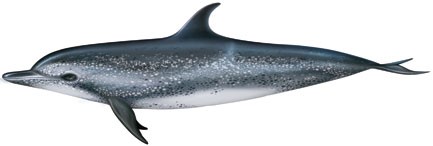Sperm whale: This species is the largest of the odontocetes, as it is equal to the whales in size. Its gigantic head, its dark striated skin and its small dorsal fin stand out. Apnea for more than an hour to search for food more than 2,000 meters deep. It is more common to see them in spring. Weight: 15-60 tons. Size: 11-18 meters.
More info…
Physeter macrocephalus, also known as the sperm whale, is the world’s largest species of toothed whale. It is a marine mammal found in all waters of the world, although they prefer the deep, warm waters of the tropical and subtropical oceans. Males can reach a length of up to 18 metres and a weight of up to 57 tonnes, while females are generally smaller.
The sperm whale is characterised by its enormously large head and distinctive barrel body shape. Its head accounts for up to one third of the total body length and contains the spermaceti organ, which is believed to be used for echolocation and communication. Spermaceti is a waxy, oily substance found in the male’s head that has been highly valued by humans throughout history for its luminous and lubricating properties.
These cetaceans are known to be extreme divers, and can dive to depths of more than 2,000 metres and remain underwater for up to 90 minutes. They feed mainly on giant squid and other cephalopods, but can also consume fish and sharks.
The sperm whale was heavily hunted commercially for many years, mainly for its spermaceti and oil, resulting in significant population declines. Although commercial hunting of the sperm whale has declined, the species continues to face significant threats, including ocean pollution, climate change and incidental capture in fishing nets. The species is considered “vulnerable” by the International Union for Conservation of Nature (IUCN).





